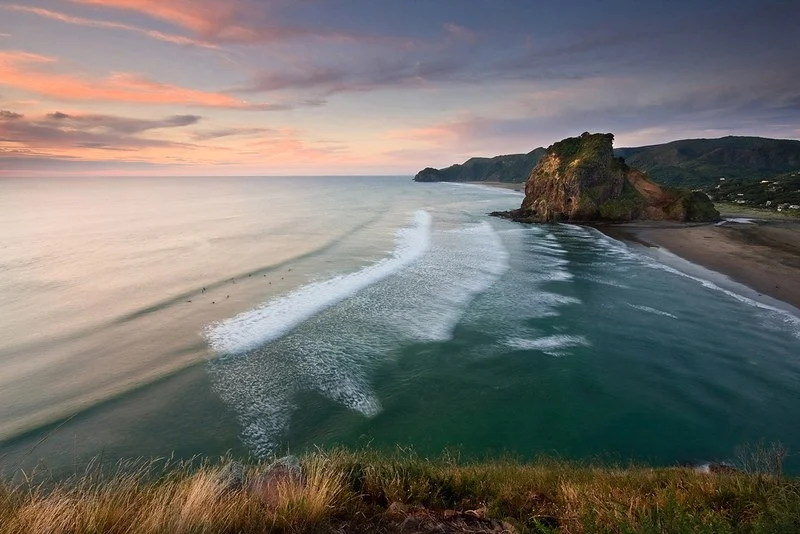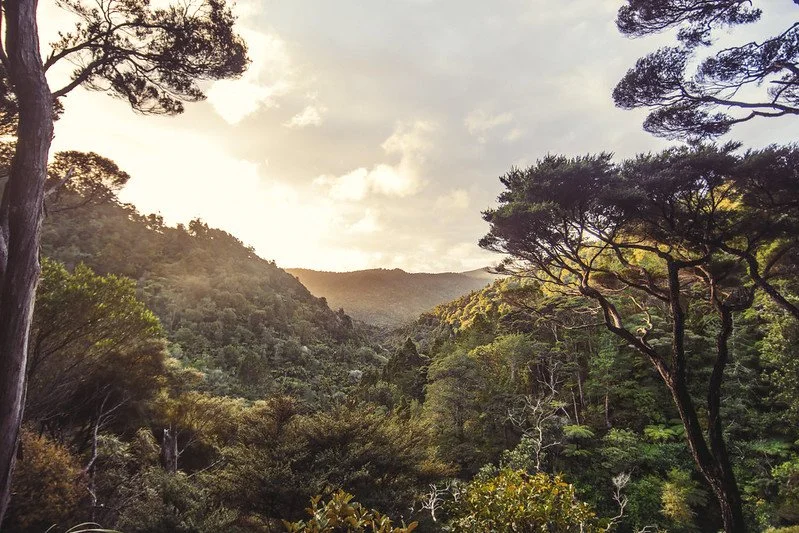introducing piha
our piha candles take their inspiration from the wild surf on the west coast of the north island of new zealand. these beaches are less than an hour's drive from the city centre of auckland but a world away from the hustle and bustle of new zealand's largest city.
piha beach and lion rock
photo by Chris Gin is licensed under CC BY-NC-ND 2.0
part of a chain of black sand beaches stretching from muriwai in the north to whatipu at the mouth of the manukau harbour the pounding surf of the tasman sea is a major attraction for day-trippers and surfies from across the auckland region. piha is famed for its long-established surf club (home of the tv series "piha rescue"), the majestic 16-million-year-old volcanic lion rock, and karekare beach - the site of dame jane campion's 1993 oscar-winning movie "the piano".
but piha isn't just about the beaches. piha is located on the western side of the waitākere ranges which separate the community from the sprawling auckland metropolis. waitākere means 'wave-swept rock' and the ranges were an important stronghold for te kawerau ā maki, the iwi of the west coast.
waitakere ranges
photo by [RaCo] is licensed under CC BY-NC-ND 2.0
te kawerau ā maki descend from the rangatira maki and his wife rotu who, along with their family and followers, moved to the area from kawhia in the early 1600s. after initially residing around the manurewa and mount smart areas of modern auckland maki spent time living near waimauku, north-east of the piha beaches, through the invitation of another rangatira in the area. an incident lead to maki being insulted and he, alongside his warriors, fought several battles against the local hapū. maki was victorious and took control of a large part of the southern kaipara region which the iwi today call home.
the iwi had a number of pā sited on the numerous headlands around piha, including whakaari pā located on lion rock. as the europeans arrived in the late 1700s and early 1800s diseases swept through the area and weakening te kawerau ā maki and other iwi living in the area. in addition to this the musket wars arrived from 1821 and after suffering a number of major losses at the hands of the ngāpuhi iwi te kawerau ā maki, along with other iwi and hapū in the auckland area, went into exile in the waikato region until 1835. they then returned to the waitākere ranges and the southern kaipara area under protection of te wherowhero, the first māori king.
in 2015 the settlement claim brought to the waitangi tribunal by te kawerau ā maki was passed into legislation which included ownership of most of the riverhead forest being passed to the iwi and both land and funds set aside for the iwi to build a marae at te henga (bethells beach), to the north of piha.



